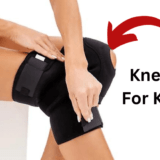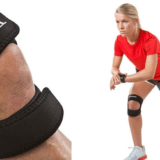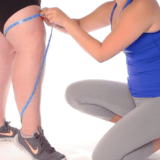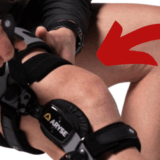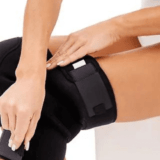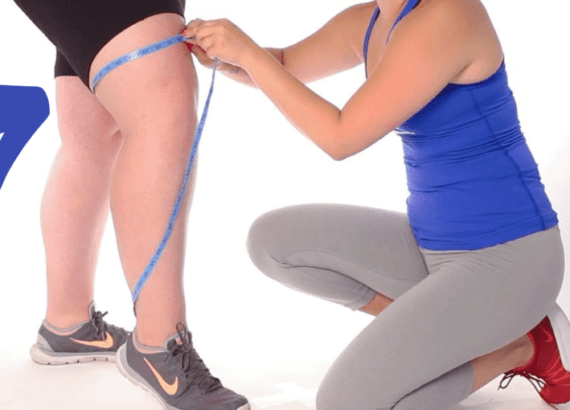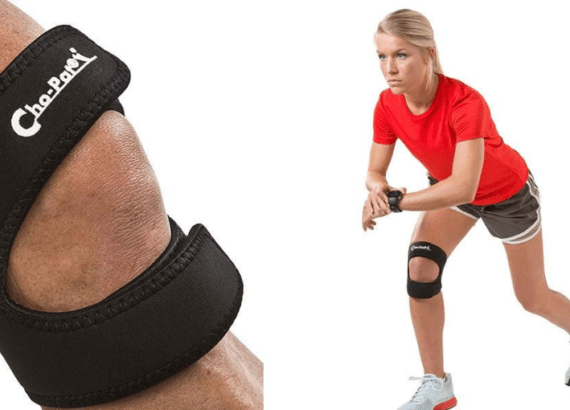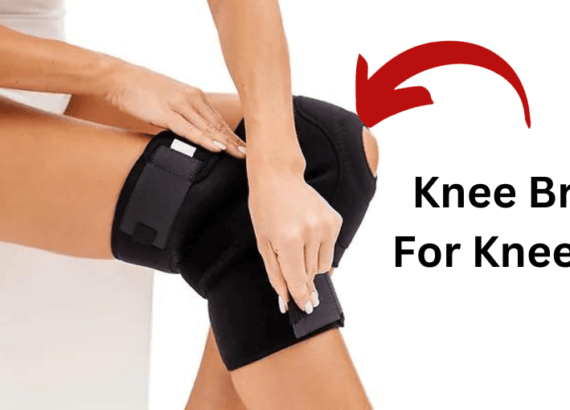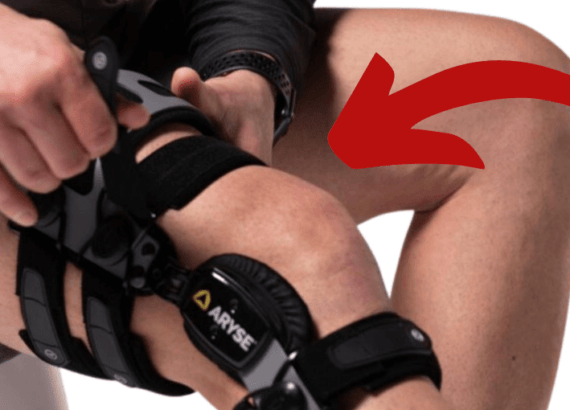How Long to Wear a Knee Brace for a Torn Meniscus
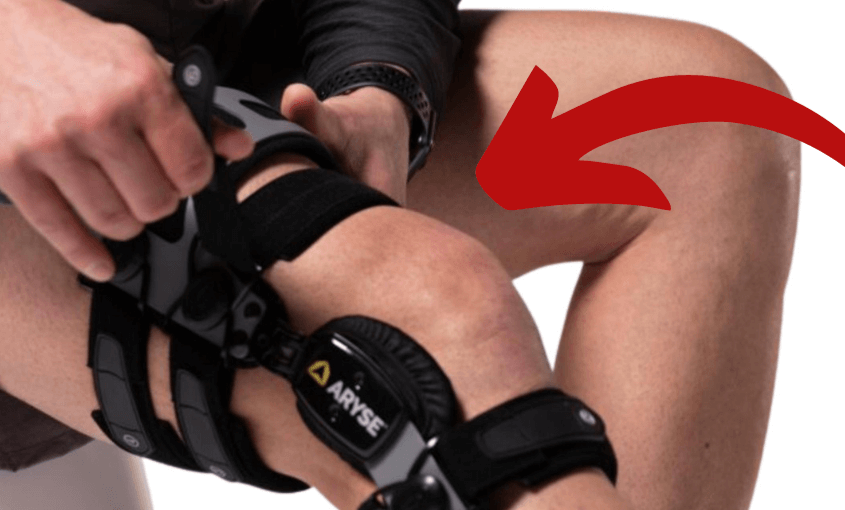
Knee braces are commonly used in the recovery process of meniscus injuries to provide support, stability, and protection to the knee joint.
They can play a beneficial role in managing pain, reducing further damage, and aiding in the healing process.
Suffering from a torn meniscus can be a painful and debilitating experience. Whether you underwent surgery or opted for non-surgical treatment, wearing a knee brace is often recommended as part of the rehabilitation process.
While knee braces can provide stability and support to the injured joint, a common question arises: How Long to Wear a Knee Brace for a Torn Meniscus?
In this comprehensive guide, we will delve into the considerations and factors that determine the optimal duration for wearing a knee brace during your recovery journey.
We will explore the various types of knee braces, their benefits, and how they aid in the healing process of a torn meniscus.
So, let’s dive in and unravel the mysteries surrounding knee braces for a torn meniscus, empowering you with the knowledge to make informed decisions on your road to recovery.
Understanding the Meniscus
The meniscus is a crucial component of the knee joint. The meniscus is a C-shaped piece of cartilage located in the knee joint.
There are two menisci in each knee – one on the inner side (medial meniscus) and one on the outer side (lateral meniscus).
These structures are susceptible to injury, especially during activities that involve twisting, pivoting, or sudden stops.
A torn meniscus occurs when there is damage to one or both of these rubbery cushions. This injury can result from sudden movements or trauma, as well as degenerative processes associated with age-related wear and tear.
Symptoms of a torn meniscus may include pain, swelling, stiffness, and difficulty moving the affected knee.
Treatment options for a torn meniscus range from conservative, non-surgical methods to surgical intervention.
The approach taken depends on factors such as the location, size, and severity of the tear, as well as the individual’s age, activity level, and overall health.
Role of Knee Braces in Meniscus Injury Recovery
Knee braces are commonly used in the recovery process of meniscus injuries to provide support, stability, and protection to the knee joint.
They can play a beneficial role in managing pain, reducing further damage, and aiding in the healing process. Here are some ways knee braces can be helpful:
- Stabilization: Meniscus injuries often lead to instability in the knee joint, making it difficult to perform certain activities. A knee brace can provide external support, helping to stabilize the joint and prevent excessive movements that may exacerbate the injury.
- Pain Relief: Knee braces can help alleviate pain associated with meniscus injuries by providing compression and support to the affected area. The compression helps reduce swelling and promotes blood flow, which can aid in pain reduction.
- Protection: Knee braces can act as a barrier, protecting the injured meniscus from further trauma or damage. They can provide a cushioning effect, absorbing some of the impact during activities and reducing the strain on the injured area.
- Improved Function: By providing stability and support, knee braces can help improve knee function during the recovery phase. They can assist in regaining confidence and mobility, allowing individuals to engage in activities with less fear of re-injury. .
Long-Term Usage Considerations
When considering long-term usage of knee braces, there are several important factors to keep in mind:
Consultation with a Healthcare Professional
Before using a knee brace for an extended period, it is crucial to consult with a healthcare professional, such as an orthopedic specialist or physical therapist.
They can evaluate your specific condition, provide guidance on whether long-term brace usage is necessary, and recommend the most suitable type of brace.
Proper Fit and Comfort
A knee brace should fit properly and be comfortable to wear for long periods. Ill-fitting braces may cause discomfort, skin irritation, or hinder circulation.
It is important to follow the manufacturer’s instructions and consult with a healthcare professional to ensure the brace is properly fitted to your unique knee anatomy.
Gradual Weaning
In some cases, especially during rehabilitation, a healthcare professional may recommend gradually reducing the dependency on a knee brace over time.
This process, known as weaning, helps the muscles and ligaments around the knee regain strength and stability.
It is important to follow the weaning plan and seek guidance from healthcare professionals during this transition.
Muscle Strengthening and Rehabilitation
Relying solely on a knee brace without addressing underlying muscle weakness or instability may not be beneficial in the long term.
It is essential to engage in appropriate muscle-strengthening exercises and rehabilitation protocols recommended by a healthcare professional to promote optimal knee joint function and reduce the reliance on the brace.
Expert Advice on Duration
It is important to consult with a healthcare professional, such as an orthopedic specialist or physical therapist, to get expert advice on the duration of knee brace usage for a meniscus injury.
The duration can vary depending on factors such as the severity of the injury, the individual’s healing progress, and the specific treatment plan.
Here are some common areas where advice on duration might be relevant:
Exercise and Fitness Duration
- The ideal duration for different types of workouts (e.g., cardio, strength training, flexibility).
- How to gradually increase workout duration to avoid overtraining.
Studying and Learning Duration
- Effective study session durations and techniques for maximizing retention.
- Balancing study duration with breaks for improved productivity.
Work and Productivity Duration
- Time management strategies for optimizing work duration.
- How to determine the ideal duration for specific tasks or projects.
Sleep Duration
- Recommendations for the appropriate duration of sleep for different age groups.
- Strategies for improving the quality and duration of your sleep.
Relationship Duration
- Advice on maintaining healthy relationships and the importance of spending quality time together.
- How to assess the duration of a relationship and make informed decisions.
Travel Duration
- Planning the duration of trips and vacations for a balanced experience.
- Tips for making the most of short-duration trips.
Financial Planning Duration
- Setting financial goals and determining the duration needed to achieve them.
- Strategies for saving and investing over a specific time frame.
Project Management Duration
- Estimating project durations and managing timelines effectively.
- Strategies for adjusting project durations when faced with unexpected challenges.
Tips for Wearing a Knee Brace
Wearing a knee brace can provide support and stability to the knee joint, especially during physical activities or while recovering from an injury. Here are some tips for wearing a knee brace:
Choose the right brace
There are various types of knee braces available, such as sleeves, hinged braces, or wraparound braces.
Consult with a healthcare professional to determine the most suitable type of brace for your specific needs.
Get the correct size
Ensure that you choose a knee brace that fits properly. A brace that is too tight may cause discomfort or interference with circulation, while a brace that is too loose may not offer adequate support.
Follow the manufacturer’s instructions for sizing or seek guidance from a healthcare professional.
Start gradually
If you’re not accustomed to wearing a knee brace, start by wearing it for shorter periods and gradually increase the duration.
This helps your body adjust to the brace and ensures that you can tolerate it comfortably.
Position it correctly
Place the knee brace snugly over your knee, aligning it properly with your patella (kneecap). Follow any specific instructions provided with your brace to ensure proper positioning.
Use the straps or closures
Many knee braces come with straps or closures that provide additional support. Secure these straps or closures tightly but comfortably to prevent the brace from sliding or shifting during movement.
Wear appropriate clothing
Choose lightweight, breathable clothing that allows the knee brace to fit comfortably. Avoid bulky or restrictive clothing that may impede the brace’s effectiveness.
Different Stages of Meniscus Tear Recovery
Recovering from a meniscus tear involves different stages, and the specific timeline can vary depending on the severity of the tear and individual factors. Here is a general outline of the stages of meniscus tear recovery:
- Acute phase: This phase begins immediately after the injury and typically lasts for a few days to a couple of weeks. During this stage, the focus is on reducing pain, swelling, and inflammation. Rest, ice, compression, and elevation (RICE) are commonly used during this phase, along with non-steroidal anti-inflammatory drugs (NSAIDs) as recommended by a healthcare professional.
- Early rehabilitation: Once the acute phase subsides, usually within a few weeks, early rehabilitation begins. The goal is to regain range of motion and restore strength in the supportive muscles around the knee. Physical therapy exercises, such as gentle stretching, quadriceps sets, and heel slides, may be prescribed to improve mobility and muscle activation.
- Strengthening and flexibility: As the knee starts to regain strength, the focus shifts towards more vigorous exercises to strengthen the surrounding muscles. This stage typically starts around 4-6 weeks post-injury. Physical therapy may include exercises targeting the quadriceps, hamstrings, glutes, and calves. Balance and stability exercises may also be incorporated to enhance joint stability.
- Functional recovery: This stage, which generally occurs around 8-12 weeks post-injury, focuses on functional exercises and activities specific to the individual’s needs. The emphasis is on returning to normal daily activities, sports, or specific occupational demands. Physical therapy may involve agility drills, sport-specific movements, and gradually increasing the intensity of exercise.
- Return to full activity: The final stage of recovery aims at returning to full activity without limitations. This typically occurs around the 3-6 months mark, although it may take longer for more severe tears or cases that require surgical intervention. The individuals should continue to engage in strength and flexibility exercises to maintain knee stability and prevent future injuries.
FAQ
Here are some frequently asked questions (FAQ) about meniscus tears and their recovery:
Q1: What is a meniscus tear?
A meniscus tear is a common knee injury involving damage to the rubbery C-shaped discs (menisci) that cushion and stabilize the knee joint.
It can occur due to sudden twisting movements, degeneration over time, or as a result of sports or physical activities.
Q2: Do all meniscus tears require surgery?
Not all meniscus tears require surgery. The treatment approach depends on the severity, location, and symptoms of the tear.
For minor tears or those in the outer edge of the meniscus that have good blood supply, non-surgical treatments like rest, physical therapy, and pain management may be sufficient. However, more complex or larger tears may require surgical intervention.
Q3: How long does it take to recover from a meniscus tear?
The recovery time can vary depending on the severity of the tear, treatment approach, and individual factors.
Generally, recovery can take anywhere from a few weeks to several months. Minor tears may heal within a few weeks with conservative treatment, while more severe tears or cases that require surgery can take several months to fully recover.
Q4: Can physical therapy help with meniscus tear recovery?
Yes, physical therapy plays a crucial role in meniscus tear recovery. It helps restore range of motion, strengthen surrounding muscles, improve knee stability, and enhance function.
A physical therapist can design a personalized rehabilitation program tailored to an individual’s specific needs, guiding them through exercises and techniques to aid in recovery.
Q5: Can I engage in physical activities during meniscus tear recovery?
The type and intensity of physical activities you can engage in during recovery depend on the severity of the tear, treatment approach, and guidance from a healthcare professional.
Initially, it’s essential to rest and avoid activities that may worsen the injury. As recovery progresses, guided exercises and activities may be introduced.
It’s important to follow the advice of your healthcare provider regarding activity levels and restrictions.

As a dedicated medical professional with years of experience, Dr. Roksana Parveen understands the importance of taking a comprehensive approach to health and wellness. She believes in the power of education to provide evidence-based information to help individuals about their health.
More From Me
Connect with me and get latest updates. - Dr. Roksana Parveen
